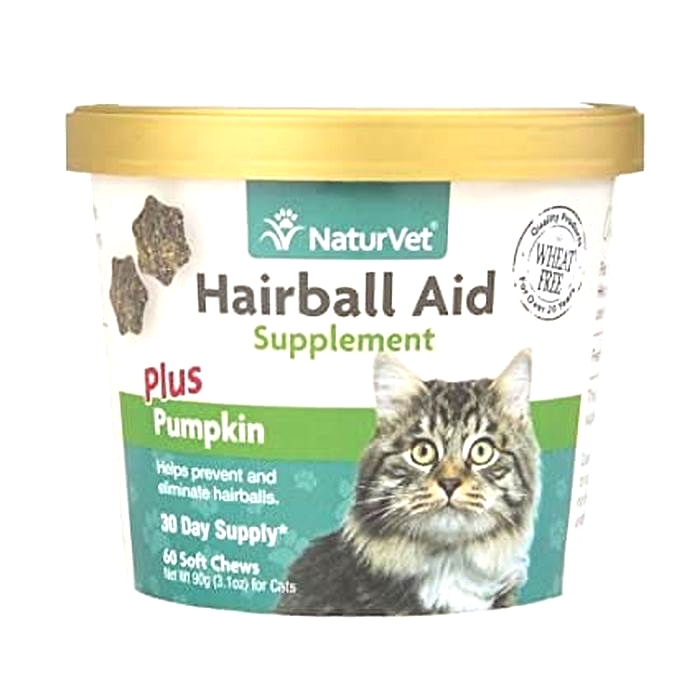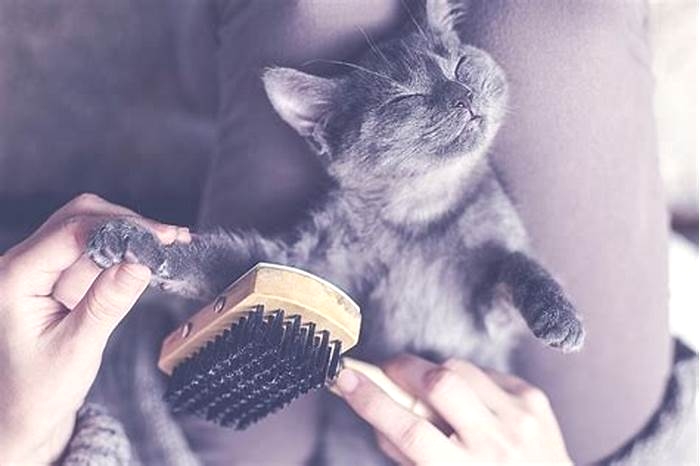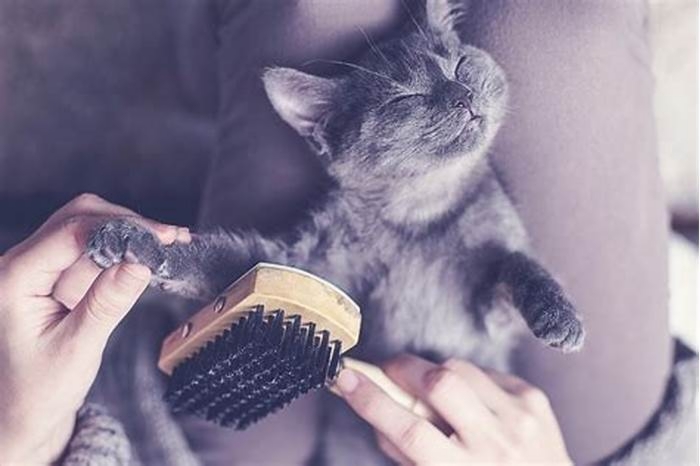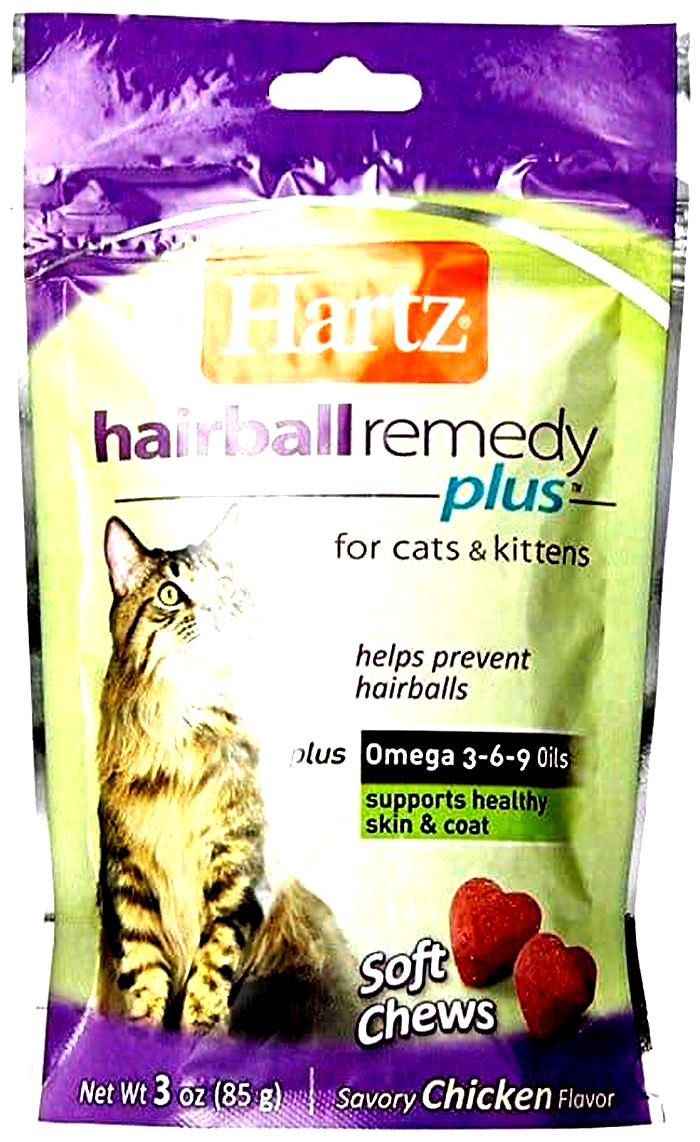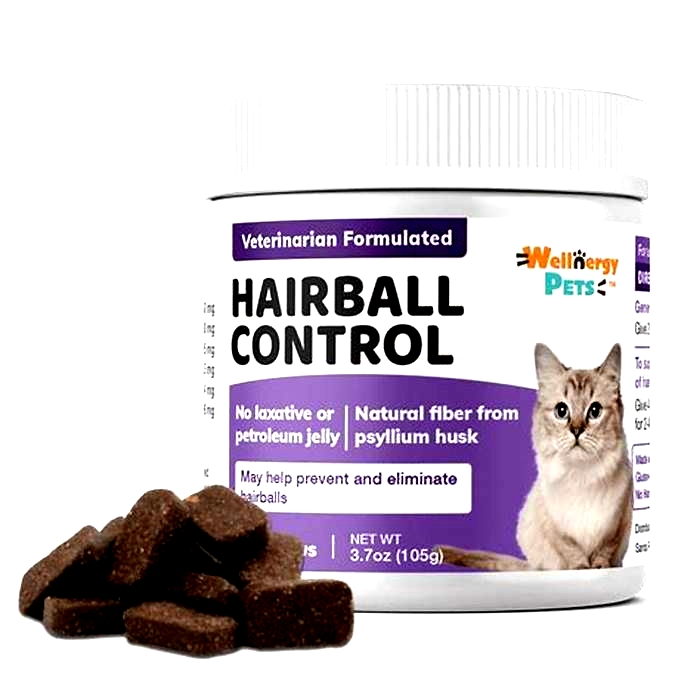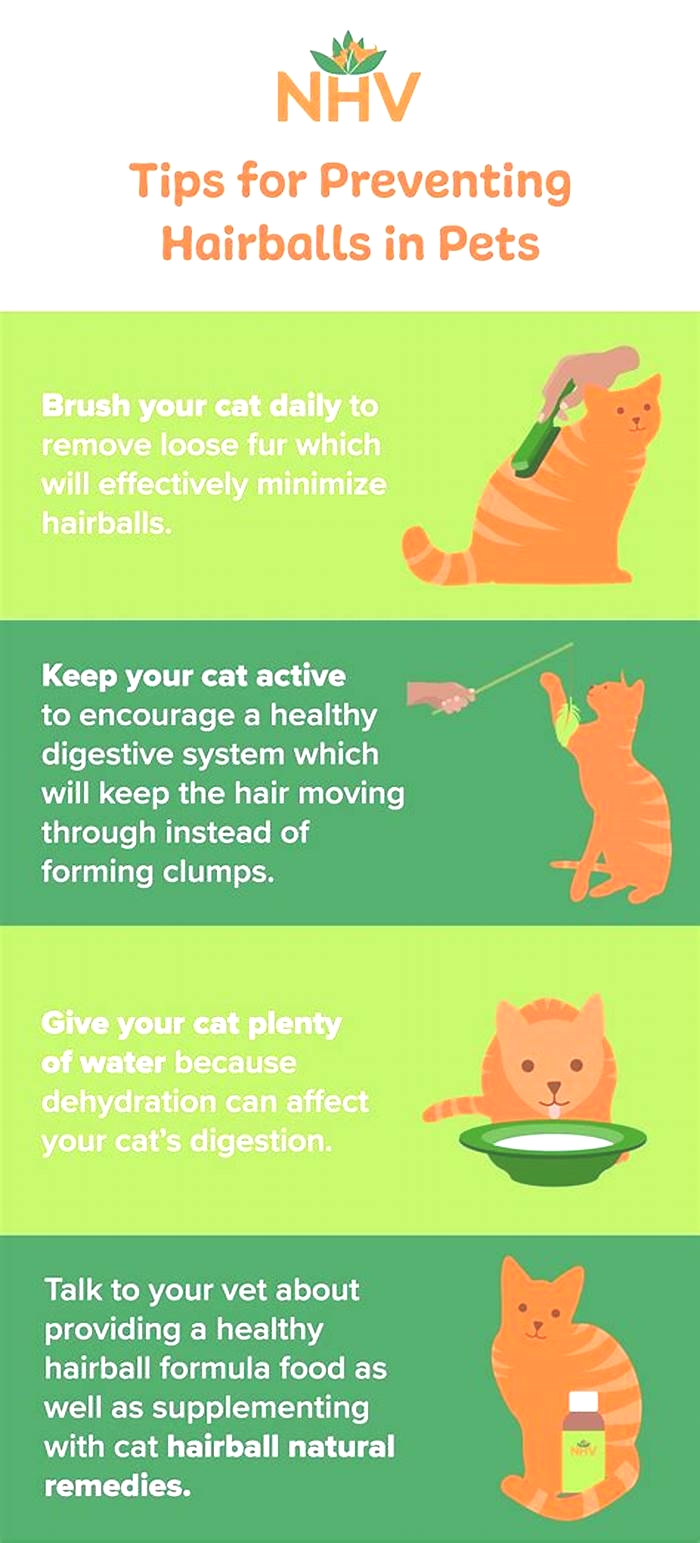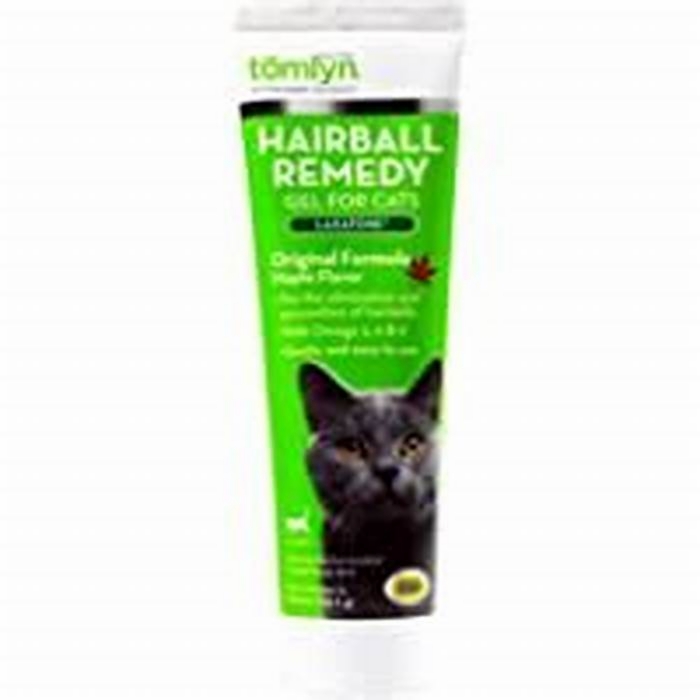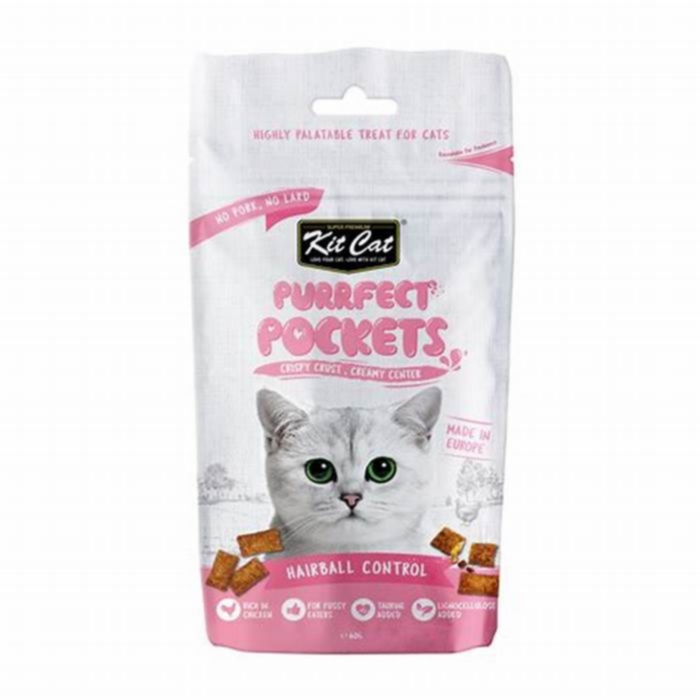The Ultimate Guide to Hairball Control Treatments for Happy Cats
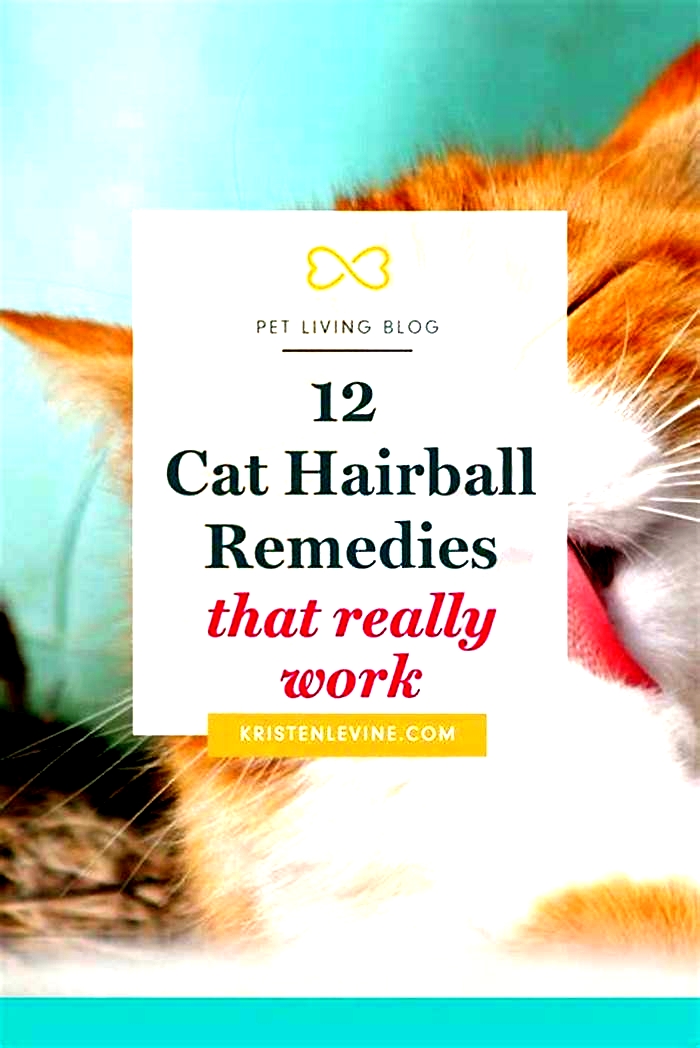
The Best Hairball Remedy forCats
One thing cats are known for is hairballs, and they're a common problem for many cats. Seeing your cat regurgitate a hairball can be scary, but they're actually quite normal and can happen frequently. While hairballs are usually not a sign of a medical issue, they can be dangerous because they can cause obstructions if they can't pass through the GI tract or if your cat can't regurgitate them.
If your cat has frequent hairballs, they may benefit from hairball remedies that reduce their frequency and prevent them from becoming serious medical emergencies. But what's the best hairball treatment for cats? Keep reading to learn more about hairball remedies to help your cat avoid an uncomfortable and potentially harmful situation.
What Is a Hairball?
A hairball is a by-product of your cat grooming themselves.1 When your cat licks their fur, they can pick up and swallow dead, loose fur, which ends up in their stomach. Most of the fur is passed through the digestive tract and excreted in feces.1 However, some fur can remain in the stomach and gradually accumulate like hair in a drain until it becomes a big, wet hairball.
Think about how much of your cat's day is spent grooming themselves. That's a lot of fur to swallow, and if it gets stuck in their stomach, they will regurgitate the fur as a long, tubular mass covered in mucus.2
Are hairballs normal?
Hairballs are normal in cats because they swallow fur while grooming themselves. However, hairballs should not be frequent, especially if they're experiencing other symptoms like a lack of appetite or vomiting.2 Hairballs can be potentially dangerous because the hair can continue accumulating in the GI tract, which can cause an obstruction.
It's normal for cats to regurgitate a hairball occasionally. But, if your cat has repeated episodes of unproductive retching, it could be a sign of an intestinal blockage caused by the accumulation of hair in their GI tract.1 Of course, there are other potential causes of retching in cats, such as allergies, asthma, or respiratory illnesses. Additionally, cats may over groom themselves as a result of allergies and behavioral conditions.That said, if your cat is experiencing any signs of illness, you should always consult your vet.
How to know if your cat has a hairball
Feline communication varies from meowing to growling, but you can usually tell when your cat has a hairball by the sound they're making. Most cats make a retching sound like they're trying to cough something up.3 Unfortunately, some cats may regurgitate their hairballs quietly, so you won't know they had one until you find it on the floor or furniture later.
If you're in the same room as your cat, you might see them looking uncomfortable, almost like they're choking.3 However, most cats can easily pass hairballs and will return to their regular activities once it's over.

Types of Hairball Remedies for Cats
Hairballs in cats are normal, but they can be dangerous. At the very least, your cat probably seems uncomfortable when trying to hack them up. Remember, hairballs usually occur because your cat's ingesting too much fur or that fur isn't able to move through their digestive tract properly.4 Luckily, there are several treatment options available. Here's how to help cats with hairballs:
Fiber
Increasing your cat's fiber intake can help reduce the occurrence of hairballs by binding to the hair and improving digestion. Fiber can help stimulate the movement of food and fur through your cat's digestive system, reducing the potential for hairball formation. The easier hair moves through the stomach and digestive tract, the less likely it will get stuck together and form a clump. Additionally, it can help existing hairballs move through the body to help cats excrete them in their feces.
Treats
There are several hairball control treats on the market that can help eliminate hairballs in the GI tract. These treats typically contain extra fiber to support digestion and GI lubricating ingredients like petroleum and other oils to help hairballs make their way through the digestive tract. Treats are a good option for cats because you won't have to force them to ingest oils or other food they don't like. Instead, they'll simply think you're rewarding them.
Lubrication
Lubricating the digestive tract is crucial for cats with frequent hairballs because it can help hair move through the digestive tract smoothly to minimize hairball formation. Your cat can't get hairballs if you don't allow them to form in the first place. There are many ways to lubricate your cat's digestive tract, but water is the easiest way.
If your cat primarily eats kibble, they might not have enough water in their digestive tract to keep things moving along, making them more likely to develop hairballs. Increasing your cat's hydration can ensure the digestive system is working properly while lubricating it to prevent the formation of hairballs.
Petrolatum
Petrolatum or petroleum jelly is another way to help lubricate your cat's digestive system and help the hairballs move through the digestive system, where they can be eliminated in the stool. However, be careful when giving your cat anything out of your medicine cabinet, and ensure that you're giving them 100% petroleum jelly with no other ingredients.
In addition, we recommend consulting a vet before giving your cat petroleum jelly because there may be safer alternatives. Petroleum jelly can lubricate your cat's digestive tract too much, causing diarrhea. Additionally, some cats won't be willing to eat it. Instead, you might try petroleum jelly lubricant gels designed specifically for cats. These products coat the hair in the digestive tract and prevent it from clumping.
Butter/Oil
Butter and oil are another way to lubricate your cat's digestive tract and help them pass hairballs. However, you should consider whether butter or oil is a good option for your cat based on their health. Some cats shouldn't consume additional fats, so always consult your vet first.

How to Prevent Hairballs
The best treatment is always prevention. Treatment of hairballs in cats should aim to reduce their occurrence and prevent them from forming in the first place. However, some cats may be more prone to hairballs than others due to an underlying illness that causes over-grooming.4 If your cat is experiencing more hairballs than usual, consult your vet, who can help diagnose the underlying cause.
Unfortunately, there's not always an underlying cause for hairballs because they're a product of your cat's natural need to groom themselves. However, there are still several ways you can prevent hairballs and avoid their potential danger.
Dietary shifts
If your cat has frequent hairballs or appears to have difficulty expelling them, you can talk to your vet about diets, treats, and additives that may prevent hairballs from forming in the stomach and digestive tract in the first place. There are several pet foods on the market that can help treat hairballs because they contain a lubricant like fish oil and extra fiber to help move hair through the cat's digestive tract. Some treats and food contain enzymes that can help break down hair since cats can't digest it.
If you don't want to change your pet's diet completely, you can make homemade food that consists of fish oil or olive oil on top of their regular cat food to help lubricate their digestive tract and coat the hair to prevent blockages.
Always consult your vet before changing your cat's diet, especially if they have an underlying health condition that might be affected.
Grooming
Remember, hairballs occur due to your pet's grooming. When they lick themselves, they swallow their fur, which can accumulate and cause a large clump in the digestive tract. One of the easiest hairball treatments for cats is to groom them regularly, which will remove excess loose fur and prevent them from swallowing it when they groom themselves.
Brushing your cat at least once a week can prevent shedding and reduce the possibility of hairballs. Unfortunately, some cats don't tolerate getting brushed, so you must train them. You can start by gently stroking them with a brush while giving them treats and extending each session as long as your cat responds well. Remember, you want brushing them to be a positive experience, so continue to give them treats and let them walk away if they're uncomfortable.

What to Consider When Choosing Hairball Treatments For Cats
Hairballs are common occurrences for cats, but since they can be dangerous and many pet parents hate having to clean them up, you may want to try a hairball remedy. Of course, there are several things to consider, such as:
- Effectiveness: Some cat hairball remedies prevent hair from accumulating and forming hairballs, while others help existing furballs move through the digestive tract. When choosing a hairball treatment, it's important to consider whether you want something that acts as a treatment, prevention, or both. All the hairball remedies discussed above should help prevent and treat hairballs, so you may have to experiment to find the one that works best for your cat.
- Ingredients: Cat hairball treatments contain various ingredients, such as lubricants and laxatives, that can improve digestion. You should always check the ingredients to ensure they're safe for your cat. For example, diabetic and overweight cats may need to avoid melted butter. However, there are plenty of vet-approved cat hairball remedies available to choose from.
- Form: The best cat hairball remedy is something you can easily give to your cat without them making a fuss. There are treats, gels, tablets, liquids, and pastes you can give them in food or alone. Some pet parents may prefer treats because they're easy and mess-free.
- Dosage: Always consult your vet or check the instructions on the cat hairball remedy before administering it to your cat. Different forms and brands may have different instructions, and giving your cat too much lubricant can lead to GI upset and diarrhea.
- Price: Most cat hairball remedies are affordable, but you can choose the best one for your cat and budget. If your cat has a recurring issue with hairballs, it may be worth discussing a prescription diet with your vet, but those may be more expensive than other hairball treatments.
- Other health conditions: Knowing what you feed your cat is crucial, especially if they have an underlying health condition. As we've mentioned, butter is a common home remedy for hairballs, but it can lead to weight gain and associated health problems like diabetes.

Final Notes
Discovering hairballs around the house or watching your cat hack them up is a normal part of being a cat parent. But, while it's rare, hairballs can lead to intestinal blockages that can be life-threatening. Luckily, there are several ways to help move hair through the digestive tract, prevent hairballs from forming, and help your cat excrete existing hairballs through their feces.
Worried about your cat's hairballs? Contact a Dutch vet today. We can provide advice and guidance on treating hairballs in cats based on their severity and your cat's health.
Hairballs in cats: A vet's guide to causes and treatment
If youre like most cat owners, nothing gets you out of bed faster than the characteristic sound of your cat hacking up a hairball in the middle of the night! Although hairballs in cats are typically normal and harmless, too many can be a sign of a problem for your feline friend.
If youre tired of dealing with that slimy mess, dont worry, there are steps you can take to stop hairballs once and for all. Read on to learn more about what causes hairballs in cats and what you can do to treat and prevent them at home, from investing in a good quality cat brush and regularly grooming your cat to over-the-counter remedies.
Symptoms of hairballs in cats
Hairballs are relatively easy to identify at home. If your cat is vomiting large slimy mats of hair, these are hairballs. Hairballs occur as a result of your cats normal grooming behavior. When your cat grooms, hair becomes caught in the barbs on cats tongue.
This hair is then swallowed and passes into the digestive tract. Some hair passes through the digestive tract and into the feces, while some hair accumulates in the stomach and is later expelled by vomiting. Hairballs are more common in long-haired breeds, but short-haired cats can experience them as well. Your cat may also be more prone to hairballs if he or she is over-grooming, which can occur due to anxiety, pain, or itching.
Treatment of hairballs in cats
Hairballs can be a disgusting nuisance, but luckily they are relatively easy to treat. Most hairballs can be remedied with over-the-counter hairball treatments. These products usually contain flavored petroleum jelly, which coats the hair that accumulates in the stomach and acts as a mild laxative to help it pass harmlessly through your cats digestive tract.
Many cats enjoy the taste of these flavored products and will lick them right off of your finger. If your cat is less inclined to eat the hairball treatment, try smearing a small amount on the inside of the cats paws so that they will have to lick it off to clean themselves, thus ingesting the product in the process.
In rare cases, hair accumulation in your cats digestive tract may become severe enough to cause a blockage, requiring hospitalization and surgery to address the problem. This is why it is important to stay on top of your cats grooming and prevent hairballs whenever possible.
Preventing hairballs in cats
The best way to prevent hairballs in your cat is through regular grooming. Long-haired cats require daily brushing to help remove loose hair and prevent hairballs, while short haired cats may only need to be brushed weekly or every other week depending on the cats grooming behavior.
If you cant groom your cat at home, regular visits to a professional groomer or your veterinary clinic can help keep your feline friend looking sleek and shiny.The same petroleum-based medication used to treat hairballs in cats can also be given regularly as a preventive to help hair pass through the digestive tract without forming hairballs.
There are also many hairball prevention treats, chews, and diets on the market which use similar formulations to help hairballs move along your cats digestive tract. Your veterinarian is a great resource to recommend a product that can keep your cat hairball free.
When to visit the veterinarian
Hairballs are a common and normal occurrence in cats, but they shouldnt happen more than once every week or so. If your cat is having frequent hairballs despite providing appropriate preventive care, it may be time to see your veterinarian.
Frequent hairballs can be an early sign that your cat is over-grooming, which can occur due to anxiety, pain, stress, itching, or certain skin conditions. It is especially important to visit your veterinarian if your cats hairballs are accompanied by any other symptoms, such as a loss of appetite, lethargy, diarrhea, or a change in behavior.
These symptoms can be a sign of a more serious condition, such as an intestinal obstruction, and should be addressed immediately. Similarly, if your cat is vomiting substances other than hair, its time for a trip to the vet to get to the bottom of the problem.
Is it a hairball or a cough?
Pet owners will often describe their cats as trying to bring up a hairball or having a hairball that is stuck. If your cat is hacking unproductively, it may not be hairballs at all! In many cases, this hacking is actually your cat coughing. Cats can cough for many reasons, including asthma, upper respiratory infections, pneumonia, and heart disease.
These are all much more serious conditions than hairballs, so it is important to see your veterinarian if you suspect your cat may be coughing. If your cat hacks as if he or she is trying to produce a hairball but never actually brings anything up, this is a sign that your cat may be coughing and should see a veterinarian.
Conclusion
Feline hairballs are more than just a messy nuisance; they can also be a sign of a problem! If your cat is having more hairballs than usual or has hairballs frequently, then it may be time for a visit to your veterinarian to look for underlying problems. The good news is that most simple hairball problems can be managed with regular grooming and over the counter preventive medications.
However, hairballs can become severe if left unmanaged, so its important not to let this hairy problem go untreated. Be sure to groom your cat regularly, and monitor your cat for any other symptoms, like lethargy, loss of appetite, or coughing, which could indicate a more serious problem than hairballs alone. As always, consult your veterinarian if you have any lingering concerns about your cats health or behavior.

